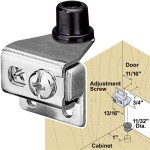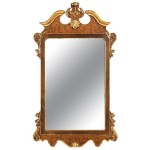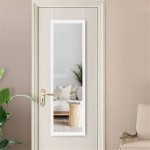How To Hang a Mirror at an Angle From the Wall
Hanging a mirror at an angle can add a unique design element to a room, creating intriguing reflections and playing with light and space. However, this task requires careful planning and execution to ensure both the mirror's security and the desired aesthetic effect. This article will outline the necessary steps to successfully hang a mirror at an angle.
Planning and Preparation: Before commencing, one must determine the precise angle desired for the mirror. This requires considering the room's layout, furniture placement, and the intended visual impact. Once the angle is established, the next step involves selecting the appropriate hanging hardware. The type of hardware depends primarily on the mirror's weight and size. Heavy mirrors necessitate robust hardware capable of supporting their weight securely.
Choosing the Right Hardware: Several options exist for hanging a mirror at an angle. D-rings and wire offer a traditional approach, while specialized angled mirror hangers provide a more streamlined solution. For heavier mirrors, French cleats provide substantial support and stability. When selecting hardware, the wall material must also be considered. Different wall types require different fasteners, such as screws for wooden studs, wall anchors for drywall, and specialized anchors for masonry.
Marking the Desired Position: Accurate marking is crucial for achieving the intended angle. One method involves using a protractor to measure the desired angle on the wall. A level can be used to ensure the marked line is perfectly horizontal. Alternatively, one can create a template on paper, representing the mirror's dimensions and the desired angle. This template can then be affixed to the wall, providing a guide for marking.
Installing the Hanging Hardware on the Mirror: The chosen hanging hardware must be securely attached to the back of the mirror. For D-rings and wire, the D-rings should be positioned equidistant from the top edge and sides of the mirror. The wire should then be threaded through the D-rings and securely fastened. For angled mirror hangers or French cleats, follow the manufacturer's instructions for proper installation. Accurate placement is paramount to ensure the mirror hangs at the desired angle.
Locating Wall Studs: For optimal stability, particularly with heavier mirrors, it is recommended to anchor the hanging hardware into wall studs. A stud finder can be utilized to locate the studs within the wall. Mark the positions of the studs that align with the marked hanging points on the wall. If studs are unavailable at the desired location, wall anchors rated for the mirror's weight must be used.
Securing the Mirror to the Wall: Once the wall studs are located, screws or appropriate fasteners can be used to secure the hanging hardware to the wall. For D-rings and wire, picture hooks or screws can be installed into the wall studs or anchors, allowing the wire to be hung. For angled mirror hangers or French cleats, the corresponding section of the hardware should be attached to the wall, ensuring proper alignment with the section attached to the mirror.
Verifying the Angle and Stability: After hanging the mirror, carefully check the angle using a level or protractor to ensure it aligns with the intended design. Gently test the stability of the mirror by applying slight pressure to different points. This will confirm the security of the hanging hardware and the mirror's stability on the wall. If any adjustments are needed, carefully remove the mirror and adjust the hardware or wall fasteners accordingly.
Fine-Tuning and Adjustments: Minor adjustments might be necessary after the initial hanging. Small shims can be placed behind the mirror to correct slight tilting or unevenness. If using D-rings and wire, adjusting the tension of the wire can also help fine-tune the mirror's position. Ensure any adjustments do not compromise the security of the hanging.
Safety Precautions: Throughout the process, prioritize safety. Wear appropriate safety glasses to protect the eyes from dust and debris. Use gloves when handling the mirror and hardware to prevent cuts. If working with a particularly heavy mirror, enlist the assistance of another person to ensure safe lifting and maneuvering. A sturdy stepladder or platform should be used to reach high hanging points, avoiding overreaching or unstable footing.
Alternative Hanging Methods: For lighter mirrors or specific design requirements, adhesive hangers can be considered. These hangers utilize strong adhesive to attach the mirror directly to the wall. However, it is essential to ensure the adhesive is rated for the mirror's weight and compatible with the wall material. Adhesive hangers may offer less flexibility for adjustment and may not be suitable for all wall types or mirror sizes. Consult the manufacturer's instructions for specific weight limits and application guidelines.

How To Hang A Mirror At An Angle Hunker
How To Hang A 100 Pound Mirror On Drywall Quora

How To Hang A Wall Mirror Easy Mounting Instructions

How To Hang A Frameless Mirror On The Wall With Pictures

How To Put A Mirror On An Angled Wall Over Bathroom Sink Vanity

All In The Detail Quick Tip Hanging A Heavy Mirror

Hanging A Mirror Or Other Object In The Corner Rozy Home

How We Hung This 500lb Antique Mirror Architectural Angle Method

How To Hang A Wall Mirror Easy Mounting Instructions

Why Frames Tilt Forward The 100 Billionth Person








